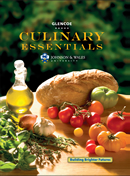
Culinary Essentials ©2010Chapter 13: Using Standardized RecipesCheck Your Answers: After You ReadSection 13.1Review Key Concepts1. Each standardized recipe must go through quality control. This process ensures that everything in the recipe meets the establishment's standards. To do this, recipes are repeatedly tested for consistency before they are used. They are tested for directions that are clear and easy to follow and an accurate listing of ingredients.Practice Culinary Academics2. Science Products baked with a different type of flour than specified may turn out denser than a product baked with the specified flour. The reason for this is that the gluten level in flour affects the density of baked goods.3. English Language Arts Use the recipe format given in the section for organizing a recipe. The recipe should be clear and easy to follow, and any alterations made should not alter the outcome of the recipe. 4. Social Studies Locate examples of technology such as equipment that helps standardize cooking, such as ovens that have more consistent cooking temperatures. They may also find software that can aid in standardizing recipes by helping to determine purchasing decisions, costs, and yield. 5. Mathematics Total yield: 20 × 4 oz. = 80 oz. Total pounds: 80 oz. ÷ 16 oz./lb. = 5 lbs. Section 13.2Review Key Concepts1. A balance scale is a scale with two platforms, one for the item being weighed, and the other for weights. The weights are added and removed until the platforms are balanced. These are used when precise measurement is important. A portion scale is similar to a bathroom scale. It measures how much the spring is depressed when an item is placed on it, and then a needle indicates the weight. An electronic scale also has a spring, but the weight is displayed by digital numbers. The readout is more accurate.2. Shrinkage is the percentage of food lost during storage and preparation. The amount of shrinkage affects both cost and portion size. Knowing how much shrinkage will occur allows a foodservice professional to purchase the correct amount. Practice Culinary Academics3. English Language Arts Explain clearly and correctly how to adjust a recipe to change portion size or total yield of the recipe. It should be written in a style and format that could be easily comprehended by a beginning cook. It should also be organized in a way that is easy to follow.4. Science Determine the volume of various objects using the water displacement method. This should give you a better understanding of volume as the amount of space a substance or object occupies. 5. Mathematics Conversion factor: 18 ÷ 4 = 4.5. Potatoes: 6 × 4.5 = 27. Bacon: 5 × 4.5 = 22.5 strips (round to 23). Cheddar cheese: 4 × 4.5 = 18 ounces. |  |















